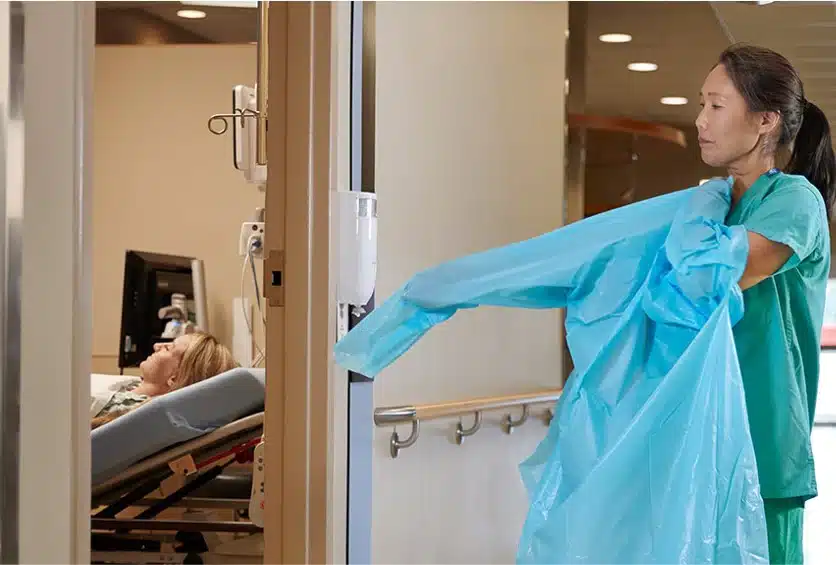Level 1 isolation gowns keep people safe from simple spills and dirt. They help stop small drops and messes from reaching clothes or skin.
What is a Level 1 isolation gown?
A Level 1 isolation gown is a type of gown worn by doctors, nurses, or other workers. It is light and easy to wear. These gowns are good to wear when the risk of dirt or spills is very low.
When should you wear a Level 1 gown?
You could wear this gown in many places, like:
- For simple care tasks in hospitals
- During quick doctor visits or checks
- In nursing homes helping older people
- At clinics when no big spills might happen
Doctors and nurses often wear other simple protection too, like a disposable non woven apron.
What does a Level 1 gown protect you from?
A Level 1 gown protects from simple things, just a little liquid and dirt:
- Small spills of water or fluid
- Dust or dirt in the air
- Light sprays or drops
It does not protect against strong chemicals or very big spills.
What is a Level 1 gown made from?
A Level 1 gown is often made from soft, light cloth-like material called non-woven fabric. It is easy to move in and feels good when wearing for a short time. These gowns are one-time use only.
Other useful items for simple safety are plastic gloves. These keep hands clean and safe from germs.
Why choose a Level 1 gown?
You pick this gown because it is:
- Comfortable to wear for a short time
- Cheap and easy to throw away after use
- Simple to put on and take off
- Great for low risk jobs with little danger
For more covering, sometimes you might need a thicker gown like the disposable extra thick apron for medical use.
Important things to remember with Level 1 gowns:
- Always wear the gown right-side out
- Tie or close the gown fully at the back
- Change the gown right away if you see any spills or dirt
- Throw the gown away safely after one use
You can also find more simple hospital protection like disposable hospital gowns to use in safe, simple care tasks.
In short, Level 1 isolation gowns are good for:
- Low risk tasks
- Small drops and spills
- Keeping clean in doctor’s offices or clinics
They help keep everyone safe in easy ways every day.











